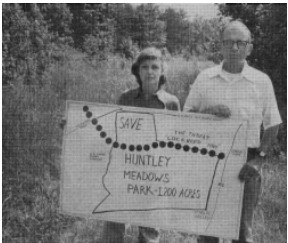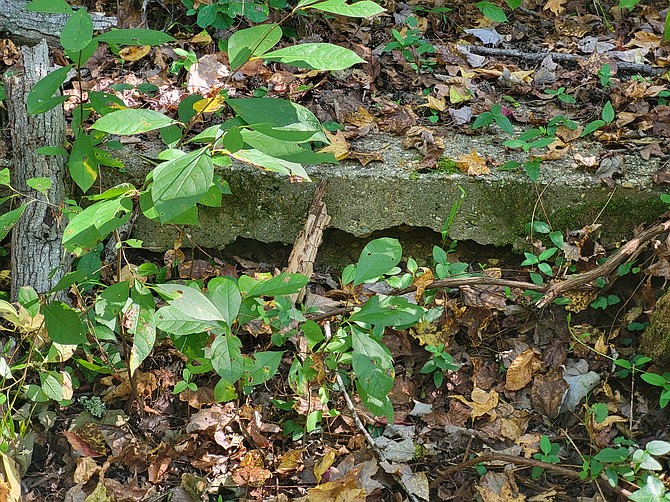Aaaah, the walk through Huntley Meadows park on a warm day in October reveals all the natural surroundings that make this wetlands park an ideal option to get away from the hustle and bustle. Wait a second, what is that? A sliver of man-made concrete peeking out of the ground disrupting this Garden of Eden? Is this a sign that Huntley Meadows is sitting on top of something not as natural as this wetlands park seems?
It turns out that a few things went on here as the farming in the immediate area died down. During the 1940s, the Bureau of Public Roads tested asphalt road surfaces at the site and then the Virginia National Guard's Battery D, 125th Gun Battalion, used the land to provide anti-aircraft protection for the nation's capital during the 1950s, according to a Fairfax County historical summary.
Next, the U.S. Navy conducted highly classified radio communication research and there were tall towers on the current parkland. Fast forward a few years before the park was formed and the area was used as a training ground for the soldiers of Fort Belvoir. The land was conveyed to the park authority in 1975.
James Winkler grew up in Hayfield in a house bordering the woods before it was parkland, and he saw some military materials being used in that area. “I know firsthand that there used to be a military electrical transformer back there on the premises, not too far from the observation deck,” he said. During thunderstorms in the 1970s, he saw fire trucks going back in the woods now part of the park, which may have been there for lightning strikes, but it is not clear why.
None of the “Friends of Huntley Meadows,” could explain what these concrete remnants were either.
 Plans for a road through the park years ago brings out protesters.
Plans for a road through the park years ago brings out protesters.
These 20th century events could have been the source of these concrete remnants, more went on at this location. Before the Civil War, Thomson Francis Mason lived in a mansion here in 1825 that was his summer retreat. This house is located near the main entrance to Huntley Meadows Park on the Richmond Highway side. Historic Huntley is on the National Register of Historic Places, the Virginia Landmarks Register and the Fairfax County Inventory of Historic Sites.
Over the years, Historic Huntley was used as a summer retreat, a grain farm, encampment for Civil War troops of the 3rd Michigan Infantry, and eventually was converted to a dairy farm. Ownership changed several times, and in later years, after being abandoned, the house endured considerable vandalism, before the county acquired it in 1989.
https://www.fairfaxcounty.gov/parks/huntley-meadows/history
